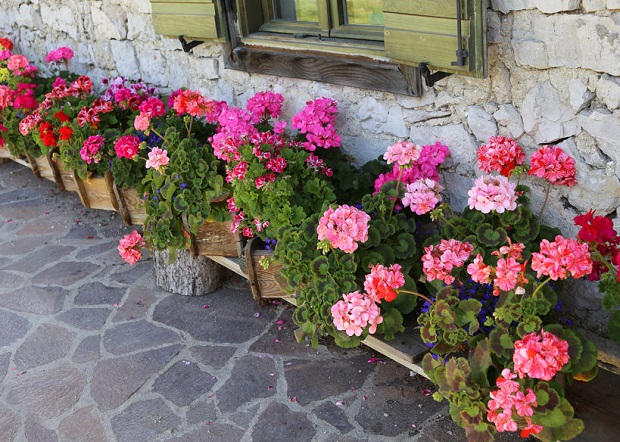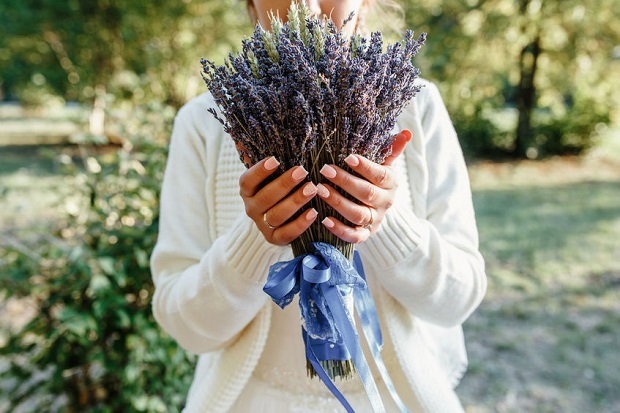
“© terezie/123RF.COM”
Can You Freeze Basil?
You can freeze basil. There are several methods you can use to preserve your basil. Many experts agree that freezing is a perfectly acceptable and easy-to-manage method for long-term storage.
Jump Ahead
Harvesting Basil for Preserving
It’s best to harvest your basil shortly before you are going to preserve it when it is at its peak of freshness. If you can’t freeze it immediately, it will last three to five days stored in an airtight container in the refrigerator. [1]
To harvest your basil wait until the plant has at least six to eight leaves. Harvest the leaves as needed leaving several leaves. Harvesting all the leaves at once will kill the plant. Harvest as often as needed; basil plants do better when harvested often. [2]
Blanching Basil
In her book, Your Backyard Herb Garden: A Gardener’s Guide to Growing, Using, and Enjoying Herbs Organically, Miranda Smith reveals that most herbs do not need to be blanched prior to freezing due to their high oil contents. Basil is an exception. The gardening teacher recommends blanching basil leaves for one minute. Plunge them into ice-cold water and pat them to dry. [3]
How to Blanch
According to the experts at Clemson Cooperative Extension’s Home & Garden Information Center, blanching is an important step in the vegetable freezing process because it stops enzyme actions that cause flavor and color loss. Basil is an herb that benefits from the blanching process. [4]
According to the folks at the extension, it is critical that you blanch for the recommended amount of time, as under-blanching will stimulate the enzyme process, and over-blanching will result in color, texture, vitamin, and flavor loss. [5]
Here are general directions for blanching vegetables.
- First, add one gallon of water per pound of vegetable to a blanching pot with a basket, cover, and bring to a boil.
- Place the vegetables in the blanching basket and lower them into the boiling water. Start timing your blanching when the water returns to a full boil. (This should only be one minute or so)
- Transfer the vegetables to cold water to stop the blanching process. Use cold running water or change the water frequently until the vegetables have fully cooled. [6]
Freezing Basil
There are many methods you can use to freeze your basil.
Easy Freezing Method: Place all of your leaves in an air tight freezer back and toss in the freezer. This method will result in the leaves sticking together, so they will need to be grated or cut into pieces for use. [7]
Freezing whole: Lay your basil leaves on a cookie sheet in a single file and freeze. Once fully frozen, the leaves can be transferred to a plastic storage bag and frozen. This method allows you to pull out single-use servings as needed. [8]
Freezing Pureed: Great for soups and sauces, you can puree basil in a blender with a small amount of water and pour it into an ice cube tray. Once frozen, store cubes in freezer bags. [9]
Freezing chopped: You can measure out individual serving-size portions of basil and freeze them in individual ice cube trays. Simply measure out a quantity of basil per cube compartment, cover it halfway with water, and freeze. Since the basil will likely float to the top, after the half-full tray has been frozen, fill the top half with water and continue to freeze. Once frozen, place cubes in a freezer bag and freeze. This method works especially well when used in soups and sauces. [10]
The experts at Penn State Extension remind us that the freezing process causes the cell walls of the basil to expand, so the thawed results will be limper than their fresh counterparts so frozen basil works best in cooked dishes. [11]
Resources
- [1] [2] Julie Garden-Robinson, Ph.D., R.D., L.R.D; North Dakota State University – “Field to Fork Basil.”
- [3] [8] Smith, Miranda. Your Backyard Herb Garden: A Gardener’s Guide to Growing, Using, and Enjoying Herbs Organically. Rodale, 1999.
- [4] [5] [6] Clemson Cooperative Extension’s Home & Garden Information Center – “Canning and Preserving Tips: Why Blanch?“
- [7] Hiltunen, Raimo, and Yvonne Holm. Basil: The Genus Ocimum. CRC Press, 1999.
- [9] IPM at ISU | Integrated Pest Management at Iowa State University – “Harvesting and Drying Herbs.“
- [10] [11] Penn State Extension – “Freezing Herbs.“





